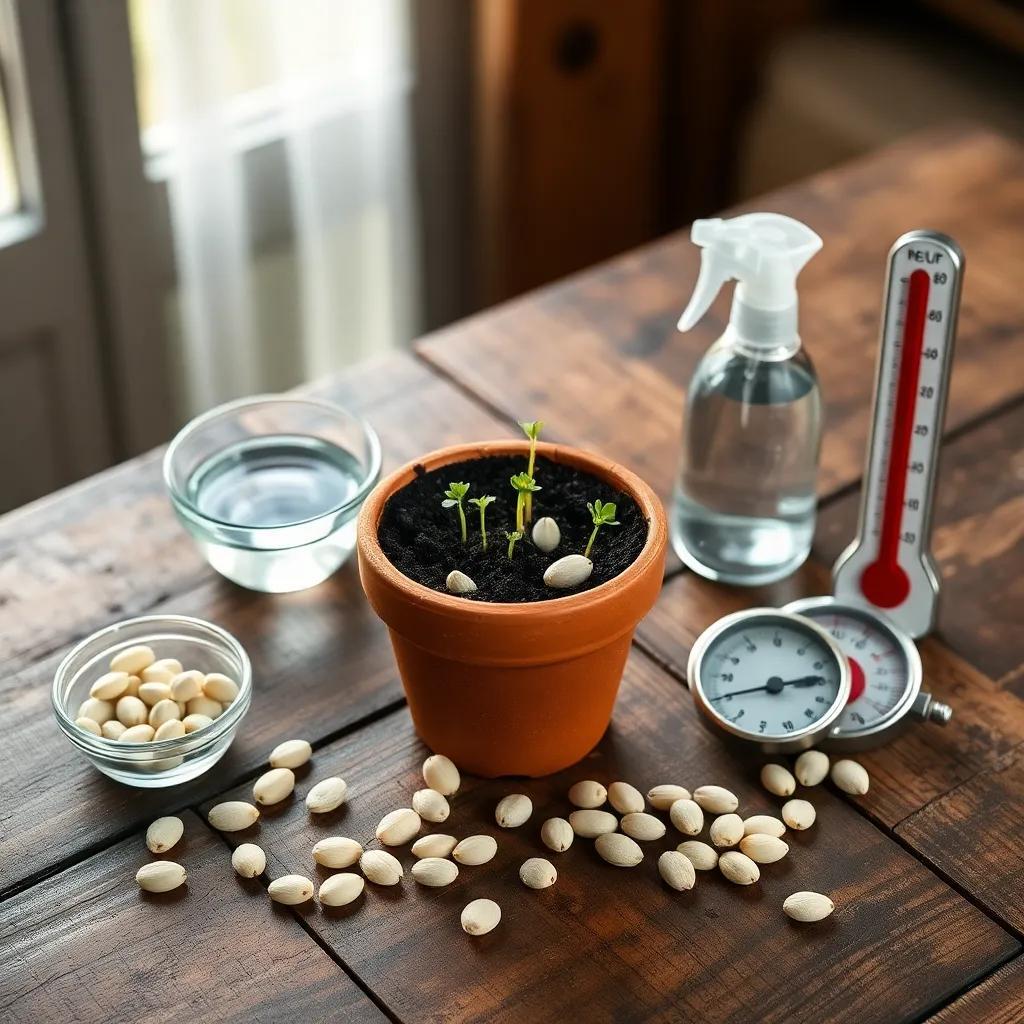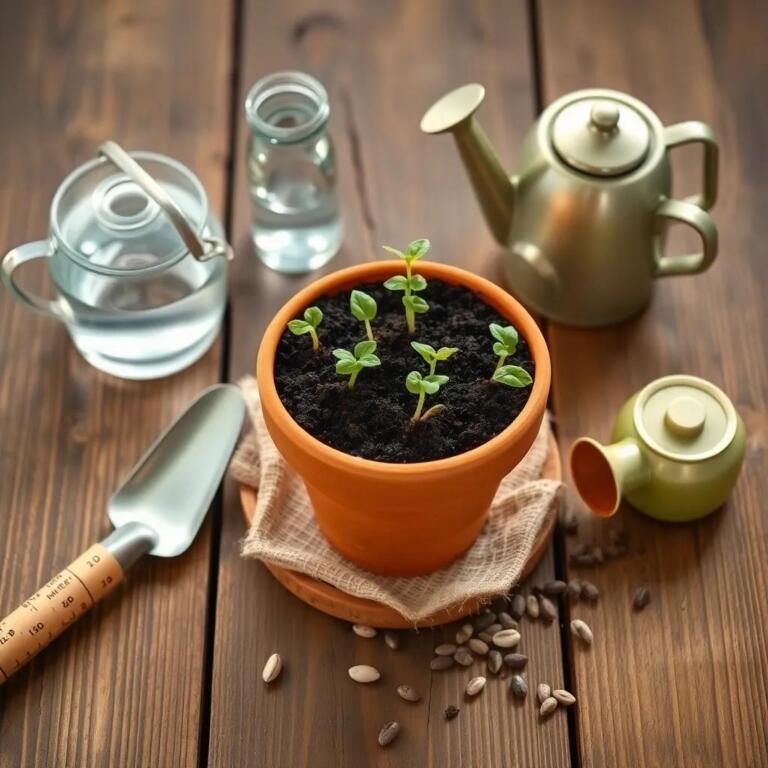Have you ever wanted to grow your own stunning passionflowers but didn’t know where to start? Well, let me share some exciting secrets about germinating passiflora seeds! With the right tips and tricks, you’ll be on your way to cultivating these gorgeous plants in no time!
Factors Influencing passiflora Seed Germination Time
When it comes to growing Passiflora seeds, a few key factors can really make a difference in how quickly and successfully they germinate. Let’s take a closer look at what influences this exciting process!
- seed Quality: The first thing I always check is the quality of the seeds. If they’re fresh and viable, they’re much more likely to sprout quickly. Imagine trying to bake with stale ingredients—no fun! So, it’s best to get your Passiflora seeds from trusted sources.
- Seed Dormancy: Some seeds are a little temperamental and come with built-in dormancy features. This means they might not germinate promptly. Think of it like a teenager who just wants to sleep in! A hard seed coat can sometimes be the reason, and a little scarification (like soaking or nicking the seed) might be needed to wake them up.
- Temperature: Just like Goldilocks, Passiflora seeds have a preferred temperature range. most of them love it warm, around 65°F to 85°F (18°C to 29°C). If it’s too cold or too hot, they might just sulk in their little seed beds and take longer to sprout.
- Moisture: Keeping the seeds nicely moist is key! Too little, and they’ll dry out; too much, and they might rot. It’s all about finding that sweet spot of consistency. A little bit of misting goes a long way here.
- Light: Interestingly, most Passiflora seeds actually prefer to germinate in the dark. So, while we think of plants reaching for the sun, these seeds are more like “shh, not yet!” when it comes to light.
Understanding these factors can help you tweak your approach to seed germination, making it a smoother, more fruitful journey. And trust me, the joy of seeing those little green shoots pop up is totally worth it!
Ideal Conditions for Successful Germination
Now that we know what influences germination, let’s talk about creating the ideal conditions for our beloved Passiflora seeds.After all, a happy seed makes for a happy plant!
- Perfect Temperature: As I mentioned before, keeping the temperature between 65°F and 85°F (18°C to 29°C) is essential.If you want to go the extra mile,consider using a heat mat! It provides that cozy warmth seeds love.
- Moisture Levels: Consistent moisture is a must, but don’t drown your seeds! The soil should be moist but not soggy. Think of it like a sponge—squeeze it out until it’s just damp. I like to use a humidity dome to keep things nice and humid without overdoing it.
- Sowing Depth: Plant the seeds about ¼ inch (6 mm) deep. This helps them get good contact with the soil while allowing them to breathe. If you bury them too deep, they might struggle to reach the surface.
- Planting Medium: Choose a well-draining mix. A blend of peat moss and perlite works wonders. This combo allows water to flow while keeping enough moisture for the seeds to thrive.
- Germination Container: A good container makes all the difference. Seed trays or pots with drainage holes are ideal. No one wants their seeds swimming in water, right?
by setting up these ideal conditions, you’ll significantly increase the chances of seeing your Passiflora seeds sprout into beautiful vines. Gardening can be such a rewarding adventure, and I can’t wait for you to see those vibrant colors in your garden!

Preparing Passiflora Seeds for Optimal Growth
Getting your Passiflora seeds ready for germination can be as exciting as waiting for a delicious meal to cook! Proper readiness is key, and I’m here to guide you through the steps to ensure your seeds are primed for success.
- Seed Collection: If you’re gathering seeds from your own passiflora plants, make sure you pick ripe and mature fruits. Ripe fruits will be soft and fully colored. after harvesting, let them sit for a day or two to fully ripen—this helps the seeds inside get ready for the big leap into germination!
- Seed Cleaning: Once your fruit is ripe, you’ll need to extract the seeds. Cut open the fruit and scoop out the seeds along with the pulp. To separate them, rinse the seeds under water using a sieve. I like to give them a gentle scrub to remove any leftover pulp. This makes a huge difference, as seeds that are cleaned well are less likely to develop mold.
- Seed Drying: Now, it’s time to dry those cleaned seeds! Spread them in a single layer on a paper towel or a clean screen. Let them air dry in a cool, dark place for about a week. This drying process is essential because excess moisture can lead to rot.
- Seed Storage: If you’re not planting right away, store those dried seeds in an airtight container—or even a resealable bag. Keep them in a cool, dark place. label the container with the variety name and the date collected, so you know how fresh they are when it’s planting time!
By following these steps, you’ll give your passiflora seeds the best chance at successful germination.The excitement of caring for these seeds will make the wait worthwhile, and soon enough, you’ll see them sprouting into vibrant plants!
Germination Methods for Passiflora Seeds
So, you’ve prepped your Passiflora seeds and are ready to get them germinating! There are a few tried-and-true methods that can help your seeds sprout with ease. Let’s explore these methods together!
- Direct Sowing: This is the simplest method! Just plant your seeds directly into the garden or a pot filled with well-draining soil.Make sure to keep the soil consistently moist but not waterlogged. The seeds will appreciate the warmth of the sun, so choose a sunny spot for your planting. This method is like giving your seeds a taste of their natural habitat!
- Seed Soaking: Giving your seeds a little soak can do wonders! Place them in a cup of warm water and let them soak for 24 to 48 hours. this helps soften the seed coat.after soaking, simply plant them in moist soil. It’s like a spa day for your seeds!
- Pre-Germination: This technique is super cool! First, soak your seeds for a few hours, then wrap them in a slightly damp paper towel. Place the wrapped seeds inside a plastic container to keep them humid. Check on them daily and moisten the towel if needed. You’ll see little sprouts in a few days, and then you can plant them in soil!
- Seed Stratification: Some Passiflora varieties need a chill before they can sprout. Place your seeds in a damp paper towel, fold it up, and put it in a zip-lock bag. Refrigerate for 4 to 6 weeks to mimic winter conditions. After that, plant the seeds as you normally would!
Choose the method that feels right for you based on your gardening style or the specific variety of Passiflora you’re working with. Each approach has its charm, and they all can lead to the magical moment of watching your seeds transform into beautiful plants! Happy planting!
Troubleshooting common Germination Issues
Even with the best preparation and methods, things don’t always go as planned when it comes to germinating Passiflora seeds. But don’t worry! Here are some common issues you may encounter, along with friendly advice on how to tackle them.
- Poor Germination Rate: If you’re only seeing a few seeds sprout, it could be a sign that the seeds are old or low quality. Make sure to buy seeds from reputable sources. another possibility is that the conditions aren’t quite right—check your temperature and moisture levels!
- seed Rot: Oh no! If your seeds feel mushy or smell bad, they might be rotting due to too much moisture. To avoid this, ensure the soil is well-draining, and avoid overwatering. If you see any rotten seeds, remove them immediately to prevent spreading.
- Dormant Seeds: Some seeds can be stubborn and won’t germinate easily. If you suspect dormancy, going back to the scarification or soaking methods might help. A little nick on the seed coat or a speedy soak can wake them up!
- Slow Germination: If it feels like your seeds are moving at a snail’s pace, check the temperature and moisture levels again.Sometimes, giving them a bit more warmth or moisture can speed things up.
- Pests and Diseases: Keep an eye out for critters or mold! If you notice pests, use a natural pest control method. For mold, ensure good air circulation around your seeds and avoid overcrowding.
By being alert to these common issues, you can take action before they become big problems. Gardening is all about patience and learning—so don’t get discouraged! With a bit of care and creativity, your Passiflora seeds can grow into the vibrant vines of your dreams!

